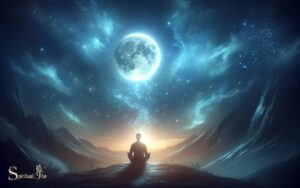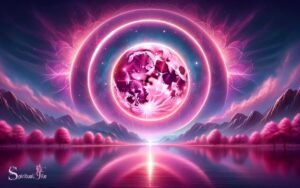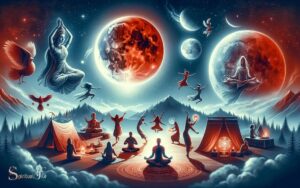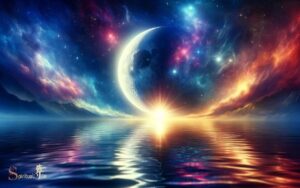Spiritual Meaning of the Crescent Moon: Rebirth!
As the silver arc of the crescent moon cradles the night, I often ponder its deeper significance. It’s more than just a celestial body in our sky; it’s a symbol steeped in spiritual meaning.
Historically, it has represented the rhythm of time as it embodies the cycle of rebirth and renewal. For many, it’s a reflection of femininity and fertility, mirroring the ebb and flow of life itself.
In various mythologies, the crescent moon has been a beacon for gods and goddesses, guiding the tides of worship and spiritual practice.
When I gaze upon it, I’m reminded of the importance of reflection and introspection, and I feel a connection to the divine. It’s a reminder that there’s an intricate dance between the cosmos and the spiritual path we walk.
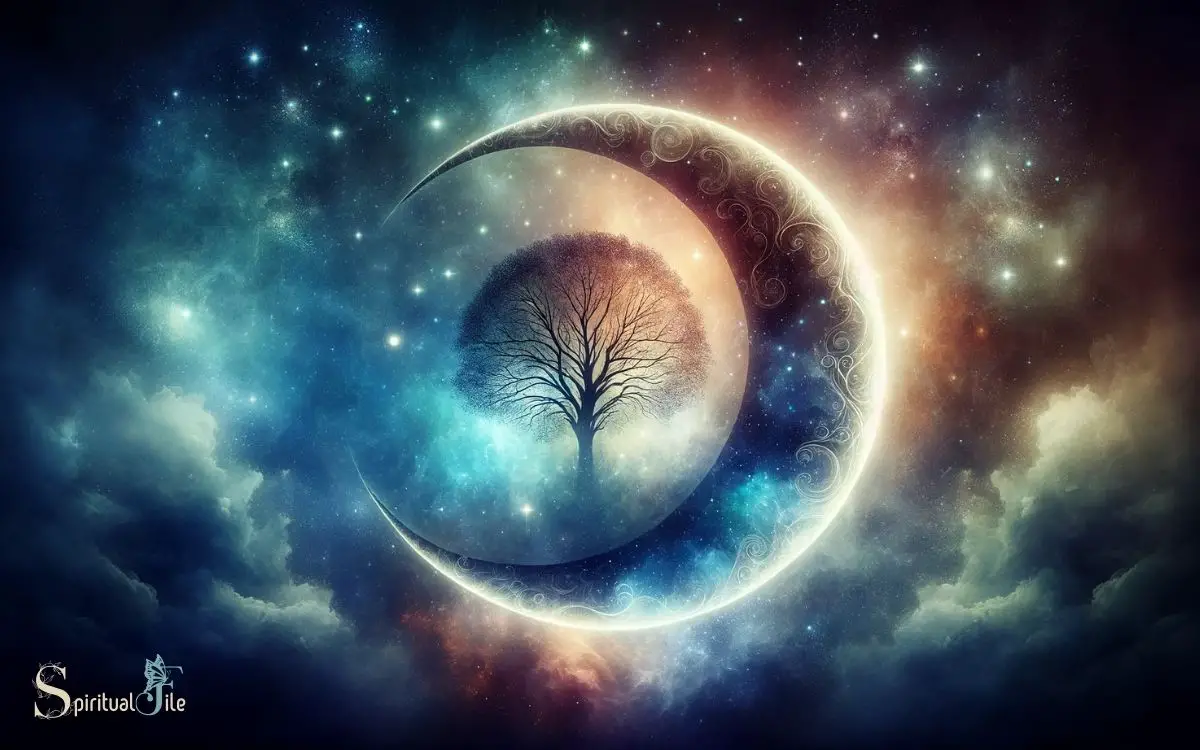
Key Takeaway
Historical Significance
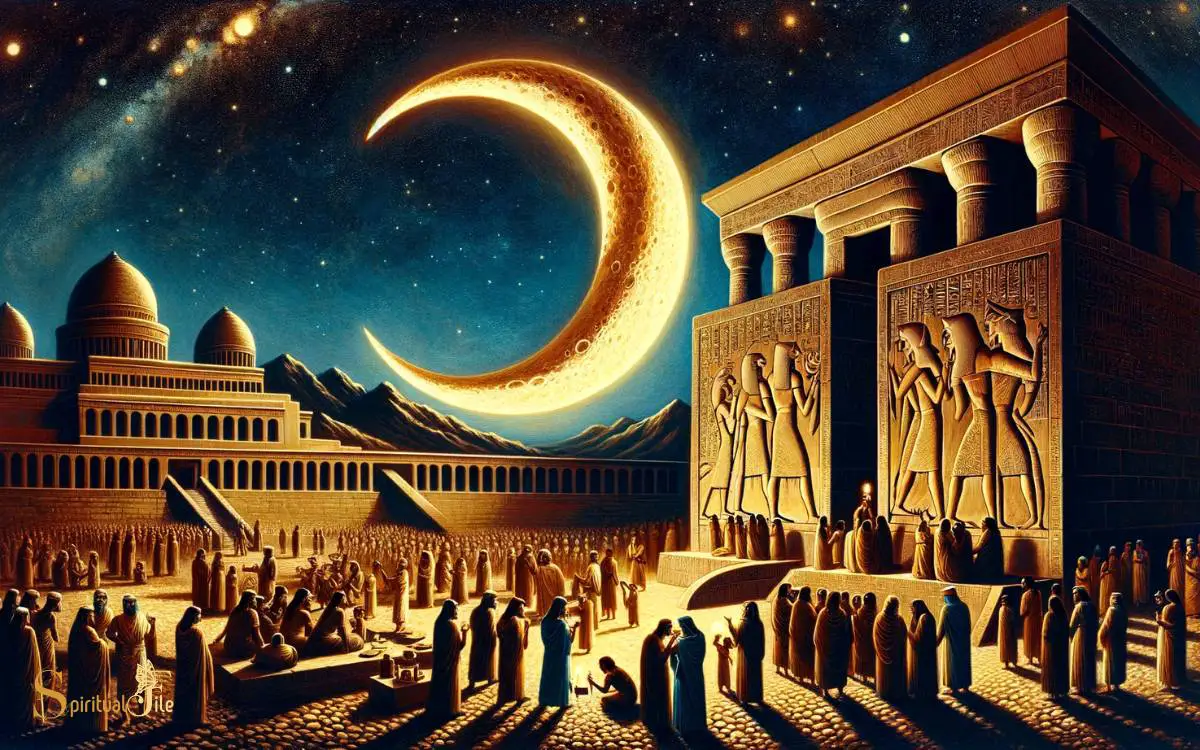
I’ve discovered that the crescent moon holds a rich historical significance, being a symbol revered in numerous ancient cultures. It’s fascinating to observe how this celestial icon has been a universal motif, representing various deities and ideologies.
In ancient Mesopotamia, the crescent was linked to the moon god Sin and epitomized divinity and sovereignty. Similarly, in the Greco-Roman pantheon, it was associated with lunar deities like Artemis and Diana, signifying chastity and the hunt.
Moreover, the crescent moon’s depiction in heraldry and flags, such as the Ottoman Empire’s emblem, underscores its enduring legacy.
It’s clear that this symbol’s resonance is more than mere adornment; it’s a testament to humanity’s enduring quest to find meaning in the cosmos.
Symbol of Renewal
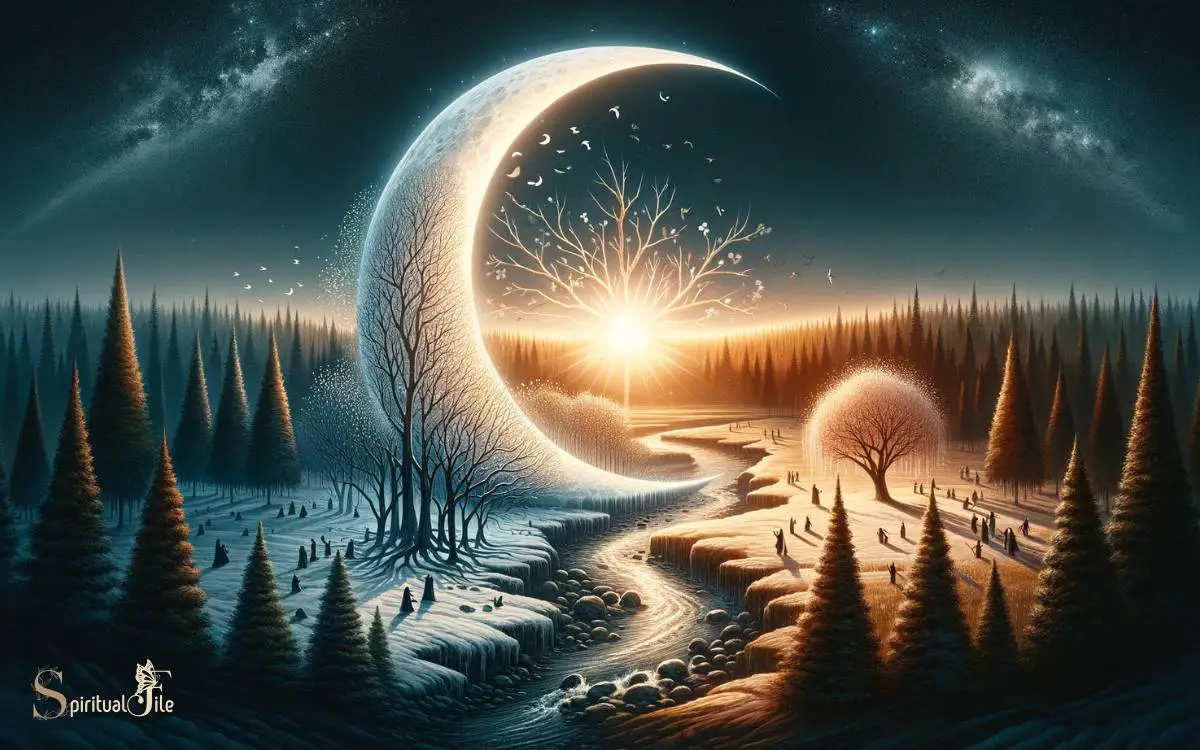
In light of its cyclical phases, I’ve come to recognize the crescent moon as a profound emblem of renewal and rebirth. Its slender arc, reemerging night after night, serves as a visual metaphor for the perpetual cycle of beginnings that define our existential journey.
This lunar phase reflects a time of promise and burgeoning potential, mirroring the natural world’s relentless pattern of regeneration.
I perceive the crescent as a celestial cue, reminding us that darkness is inevitably followed by light, and decay by growth. It’s an invitation to release the old and embrace the new with the understanding that life’s continuum relies on such transformations.
In essence, the crescent moon epitomizes the resilience of life, encapsulating the inexorable ebb and flow that fosters evolution and enlightenment.
Femininity and Fertility
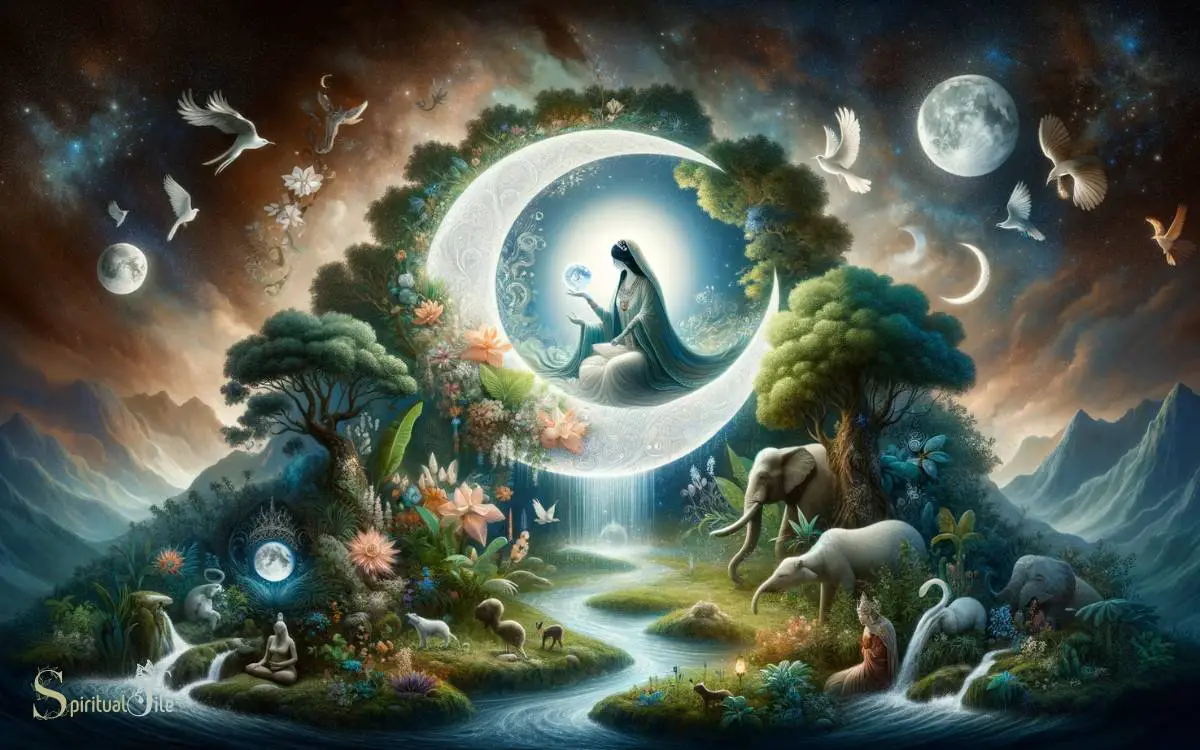
In the tapestry of celestial symbolism, the crescent moon holds a profound connection to femininity and fertility. It’s often equated with goddess archetypes, embodying the divine feminine’s nurturing and creative essence.
Moreover, the synchronization of the lunar cycle with reproductive rhythms underscores the moon’s role in representing the ebbs and flows of fertility.
Goddess Symbolism
As I delve into the crescent moon’s significance, it’s clear that within various cultures, this celestial emblem is deeply intertwined with goddess symbolism, epitomizing femininity and fertility.
The crescent moon has been a potent symbol across time, representing the divine feminine and its inherent creative power.
| Culture | Goddess | Aspect |
|---|---|---|
| Greek | Artemis | Hunt, Virginity |
| Roman | Diana | Wilderness |
| Egyptian | Isis | Motherhood |
| Hindu | Shakti | Energy, Power |
The table encapsulates the multifaceted nature of the crescent moon in relation to goddesses. Each column represents a culture and its corresponding goddess, shedding light on the unique attributes associated with femininity and fertility that the crescent moon symbolizes.
This profound connection between the moon and divine feminine aspects extends to the natural world, influencing my next contemplation on how these symbols align with reproductive cycles.
Reproductive Cycles Alignment
Exploring further, I’ve discovered that the crescent moon’s phases echo the menstrual cycle, symbolizing the rhythm of fertility and the essence of womanhood.
This alignment with reproductive cycles is not coincidental but steeped in the profound interconnectedness of the cosmos and human life. The cyclical nature of the moon offers a mirror to the feminine experience, where each phase holds deep spiritual significance.
- New Moon: Represents potential and new beginnings, akin to the onset of menstruation.
- Waxing Crescent: Symbolizes growth and intention setting, paralleling the follicular phase.
- First Quarter: Reflects decisive action and manifestation, analogous to ovulation.
- Waxing Gibbous: Encourages refinement and adjustment, mirroring the luteal phase.
- Full Moon: Embodies completion and fruition, comparable to peak fertility.
Delving into this connection enriches our understanding as we transition to exploring the crescent moon’s presence in mythology.
Crescent Moon in Mythology
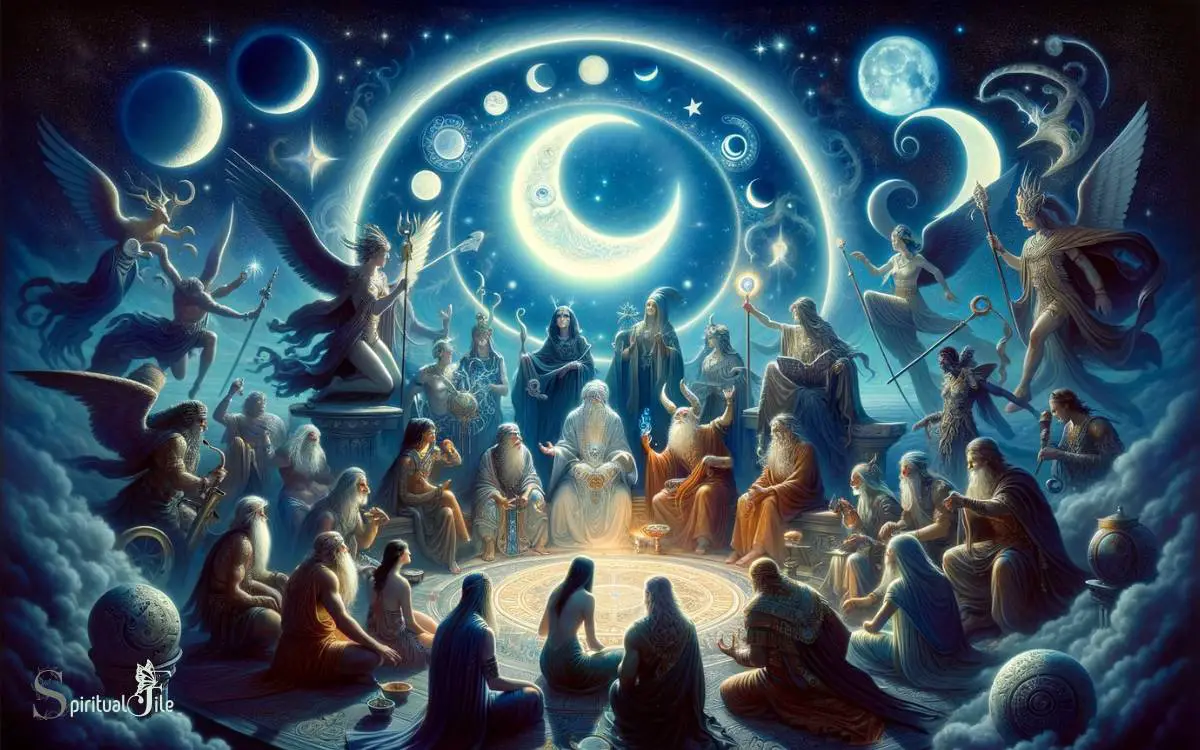
Why do I find the crescent moon so deeply embedded in various mythologies around the world? Its pervasive presence across cultures can’t be mere coincidence.
The slim arc, hanging in the night sky, has served as a potent symbol, embodying various deities and spiritual principles. In the Egyptian pantheon, the crescent represented the goddess Isis, signifying regeneration and motherhood.
The Greeks associated it with Artemis, goddess of the hunt and chastity, reflecting a blend of strength and purity. Moreover, the crescent moon’s recurring role in tales of transformation and its governance over the tides resonate with our intrinsic understanding of cyclicality and change.
Thus, it is a profound emblem that speaks to our collective subconscious, weaving a tapestry of meaning that transcends the boundaries of individual cultures.
Reflection and Introspection
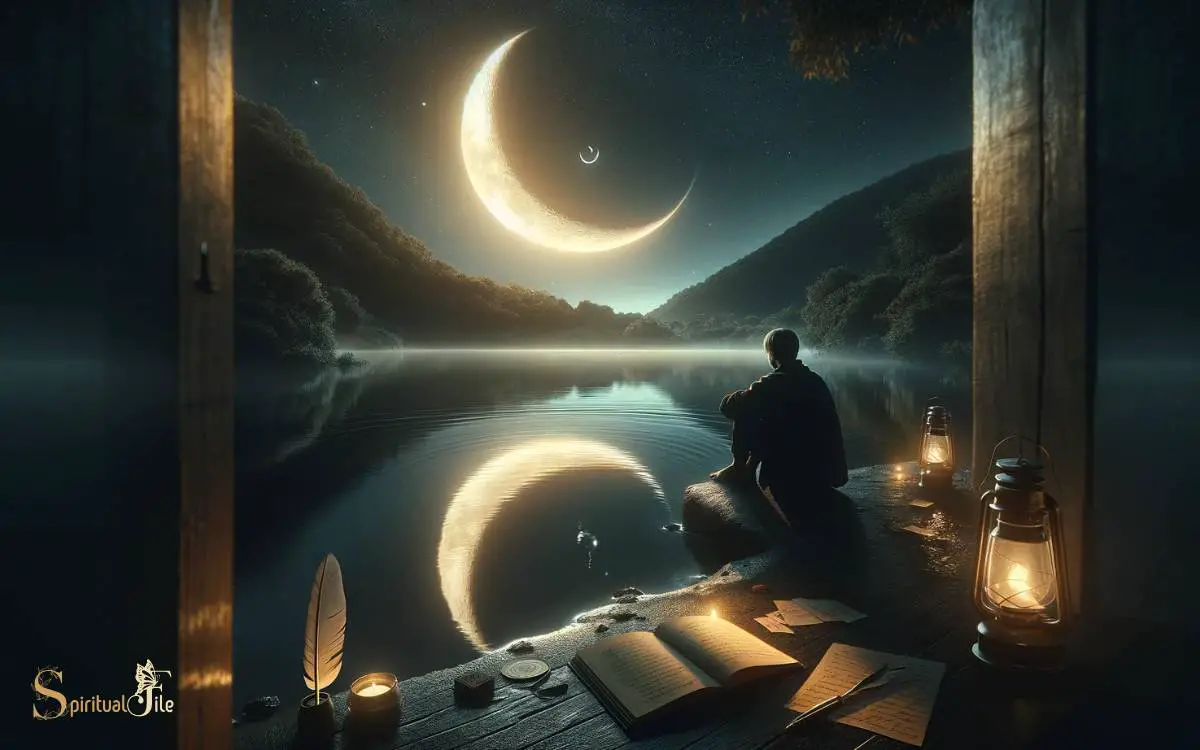
In my quest for inner peace, the crescent moon has become a symbol of reflection and introspection, guiding my contemplative nights. This slender arc in the night sky compels me to peer inward, pondering life’s profound questions and my place within the cosmos.
Its gentle illumination fosters a sanctuary for thought, away from the harsh glare of the full moon’s brilliance.
- The crescent’s subtle light encourages a softer examination of self.
- Its phases mirror the cyclical nature of introspection and personal growth.
- In its presence, I’m reminded of the importance of embracing change.
- The crescent moon signifies the potential that lies in beginnings and transitions.
- It serves as a visual cue to release old patterns and foster new insights.
In this revered silence, I find clarity and the courage to evolve.
Lunar Deities and Worship
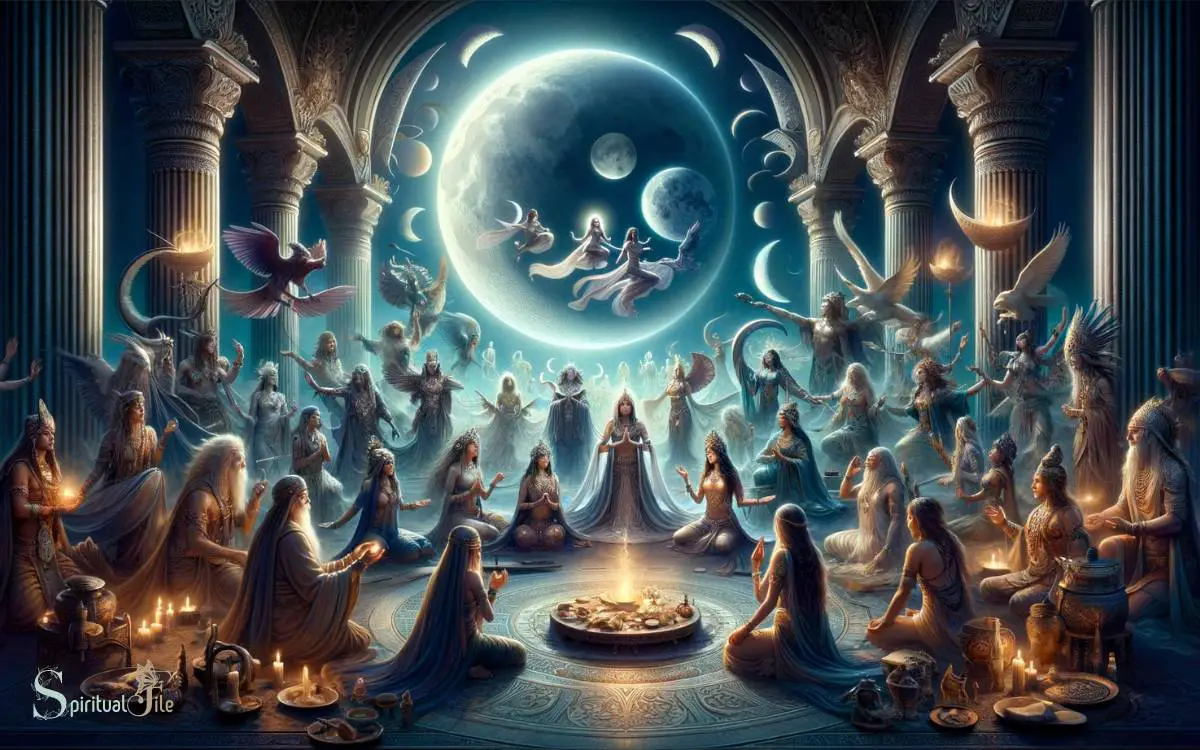
I’ve turned to the ancient tales of lunar deities to deepen my understanding of the crescent moon’s spiritual significance. Cultures across the globe have revered the moon, attributing its phases to the divine.
Historically, lunar gods and goddesses like Selene, Thoth, and Chandra were not merely celestial beings but symbols of cyclical renewal and guardians of the night.
Worshipping these deities often involved rituals aligning with the moon’s rhythm, reflecting a profound reverence for its influence on the natural world. The crescent shape, representing both promise and transition, was especially venerated.
It’s clear that these deities personified the moon’s enigmatic presence, embodying the subtle power and mystery that have captivated humans since time immemorial.
Conclusion
As I gaze upon the slender arc cradling the night, the crescent moon whispers ancient tales. In its perpetual rebirth, it mirrors the soul’s odyssey—ever waxing, waning, and waxing again.
A celestial emblem, it weaves femininity and introspection into life’s tapestry, while lunar deities bestow their silent benedictions. In every phase, a sacred allegory unfolds, revealing the profound rhythms that govern not just the heavens, but the very essence of our being.



